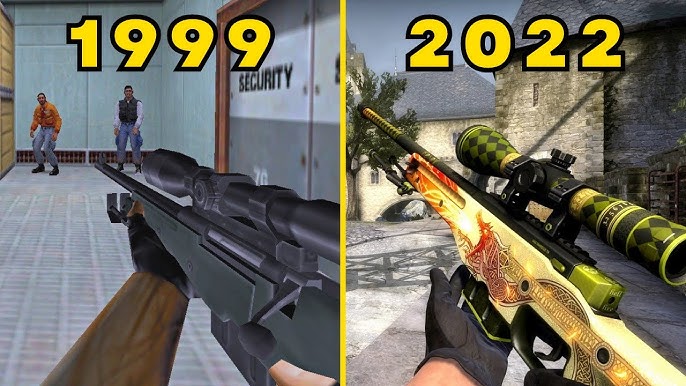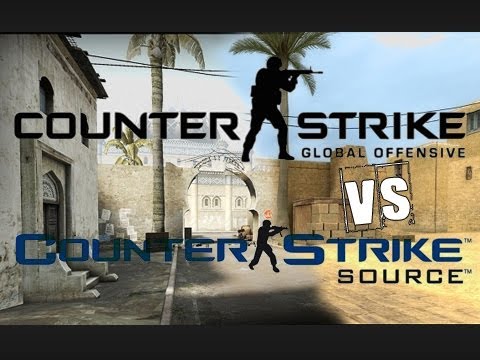Dust2 Dawn: Will Counter-Strike 2 Frag the CS:GO Esports Dynasty?

My first thought seeing the CS2 trailer was, "Seriously, this is what we've been waiting for? Another fresh coat of paint?" I still remember getting my ass kicked by Ksharp and Volcano back in the day... and that was on CRTs heavier than my current desk. But times change, or at least, the graphics do. Valve's latest iteration of Counter-Strike, cleverly named Counter-Strike 2, promises more than just prettier explosions. It boasts a subtick system, revamped smokes, and a host of other tweaks aimed at revitalizing the competitive scene. But will it actually dethrone CS:GO, a game that's reigned supreme for over a decade, or will it be just another Source-esque diversion?
The CS:GO esports scene is a well-oiled machine. Teams like FaZe Clan and Natus Vincere (Na'Vi) have refined their strategies and roles to a razor's edge. But CS2 throws a wrench into the gears. Will these established powerhouses adapt, or will new blood rise to the top? Let's dive into the potential impacts.
The Subtick System: Latency's Last Stand?
The subtick system is arguably the most significant change in CS2. In theory, it eliminates the inherent inaccuracies of CS:GO's tick-based system, where actions are only registered at specific intervals. Subtick aims to register actions instantaneously, regardless of when they occur between ticks. This could drastically reduce instances of "dying behind walls" and improve the overall responsiveness of the game.
But will it actually work as intended in a high-pressure esports environment? High ping and network inconsistencies are still a factor. Players who have invested years mastering the timing of peeks and shots in CS:GO may find themselves disoriented. Muscle memory is a cruel mistress, especially when she's screaming about a new timing window. This change alone could level the playing field, giving less established teams a chance to compete.

Smoke Screens: From Static to Dynamic
The revamped smoke grenades in CS2 are another game-changer. The ability to dynamically shape smokes with bullets and HE grenades adds a new layer of tactical depth. No longer are smokes static barriers. They're now fluid, interactive elements that can be manipulated to create openings, deny vision, and even flush out opponents.
This change will undoubtedly impact strategies on both the offensive and defensive sides. Expect to see more creative smoke placements and counter-smokes, requiring players to think on their feet and adapt to rapidly changing situations. Teams that can master these new smoke mechanics will have a significant advantage. Imagine the possibilities: a well-timed burst through a smoke to clear a corner, or a perfectly placed HE grenade to open up a gap for a teammate to push through.

Role Reversal: Will the AWP Still Reign Supreme?
The question on everyone's mind is: will existing roles translate to CS2? Will the AWP still be the king of long-range engagements? Will entry fraggers still be able to confidently peek corners? Will in-game leaders (IGLs) be able to adapt their strategies to the new dynamic?
I suspect the answer is a qualified "yes." While the core principles of each role will remain the same, the nuances will change. AWPers will need to adjust to the subtick system and the new smoke mechanics to maintain their dominance. Entry fraggers will need to be even more precise and reactive, given the reduced latency. IGLs will need to develop new strategies that take advantage of the dynamic smokes and the subtick system.
Take, for example, s1mple, widely regarded as one of the best CS:GO players of all time. His AWPing prowess is legendary, but will he be able to replicate his success in CS2 with the new mechanics? Only time will tell. His raw skill is undeniable, but adaptation is key.

The Skeptic's Corner: A Pro's Perspective
I spoke with a pro player, who wished to remain anonymous, about their initial impressions of CS2. Their response was... measured.
"This could be the greatest refresh to CS ever, but I'm not convinced the changes are a true upgrade yet," they said. "The subtick system feels different, but it's hard to say if it's actually better. I also don't like the removal of my skins."
The sentiment is understandable. Change is always met with resistance, especially in a community as passionate as the Counter-Strike scene. The removal of skins is a legitimate concern for many players who have invested heavily in their digital collections. Valve will need to address these concerns to ensure a smooth transition.

Tournament Viewership and the Betting Bonanza
Counter-Strike esports is big business. Tournament viewership numbers are consistently high, and the betting industry is booming. CS2 has the potential to attract even more viewers and bettors, but only if it delivers on its promises.
If the subtick system and the new smoke mechanics lead to more exciting and unpredictable matches, viewership will likely increase. However, if the changes are perceived as gimmicky or unfair, viewers may tune out. Similarly, the betting odds will be heavily influenced by how quickly teams adapt to the new meta. Expect to see a lot of volatility in the early days of CS2 esports.

Final Thoughts: A Cautious Fragsworth Remains
Counter-Strike 2 has the potential to be a game-changer for the esports scene. The subtick system and the new smoke mechanics are intriguing, but their ultimate impact remains to be seen. Established teams like FaZe Clan and Na'Vi will need to adapt quickly to stay competitive, and new blood may rise to challenge their dominance.
For now, I remain cautiously optimistic. I've seen enough iterations of Counter-Strike to know that change is not always progress. But I'm willing to give CS2 a chance to prove itself. After all, even an old dog like me can learn a new trick... or at least try not to get smoked through walls quite as often.